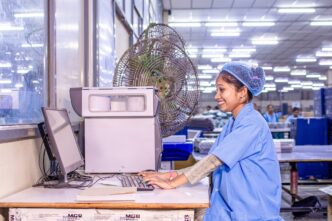In the wake of recent disruptions—from pandemics to geopolitical tensions—businesses are re-evaluating their supply chain strategies. Enter biomanufacturing, an innovative solution that combines biological processes with manufacturing to create sustainable products. This approach could redefine how industries respond to challenges and serve as a cornerstone for economic resilience.
Biomanufacturing leverages living organisms to produce materials, chemicals, and even food. For instance, companies like Ginkgo Bioworks in the United States harness synthetic biology to design custom microbes for various applications, from pharmaceuticals to agriculture. This not only streamlines production processes but also minimizes reliance on traditional, resource-intensive methods.
Consider the broader implications for supply chains. Traditional manufacturing heavily depends on fossil fuels, often leading to volatile costs and environmental concerns. Biomanufacturing provides an alternative that is inherently more sustainable and adaptable. For example, during the COVID-19 pandemic, the demand for personal protective equipment surged. Some companies pivoted to biomanufacturing processes to create bio-based substitutes for conventional materials, showcasing the flexibility of this approach.
The biomanufacturing sector is still in its infancy but is gaining traction. Countries like Singapore are positioning themselves as hubs for biomanufacturing by investing in infrastructure and workforce development. The Singapore Economic Development Board has launched initiatives to attract firms in this space, focusing on precision medicine and sustainable materials.
Emerging markets, too, stand to benefit substantially from biomanufacturing. Countries like Kenya and Brazil are exploring bio-based solutions to local challenges. In Kenya, for instance, researchers are working on bioengineering crops that require less water and are more resistant to pests. Such innovations could enhance food security and stimulate local economies, proving that biomanufacturing extends beyond just corporate interests; it resonates with community needs.
However, biomanufacturing is not without its challenges. Regulatory frameworks must evolve to ensure safety and efficacy while fostering innovation. The current patchwork of policies can stifle growth, as companies navigate a maze of compliance requirements. Collaborative efforts between governments and industry leaders are essential to create a conducive environment for biomanufacturing to thrive.
Moreover, the initial investment in biomanufacturing technologies can be daunting. Small and medium-sized enterprises often lack the capital to undertake such transformative projects. Here, the role of venture capital becomes crucial. Investors increasingly recognize the potential of biomanufacturing as a sustainable investment strategy, particularly in the context of increasing consumer demand for eco-friendly products.
As biomanufacturing gains momentum, its impact will likely ripple through various sectors. The food industry could see a revolution in how products are cultivated and processed, while pharmaceuticals may benefit from streamlined production methods that reduce costs and enhance accessibility.
In this rapidly changing landscape, biomanufacturing presents a compelling opportunity not only for economic growth but also for fostering a more resilient and sustainable future. By reimagining traditional manufacturing paradigms, industries can emerge stronger, ready to tackle the challenges that lie ahead.











